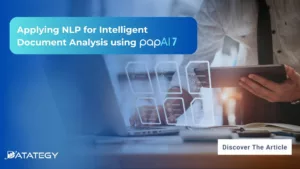Applying NLP for Intelligent Document Analysis using papAI 7 AI...
Read MoreOptimizing Models Production:
The Role of Monitoring and Retraining
Table of Contents
ToggleOn the basis of fresh data or changing circumstances, production models must be updated on a regular basis. Teams can decide to automate retraining based on a timetable or particular triggers, such as performance drift or substantial data, or they can manually change a model.
With the emergence of new regulations such as the AI ACT and GDPR, companies need to be compliant with their machine learning models. A 2023 study by researchers at Stanford University showed that retraining AI models with debiased datasets can significantly reduce bias in decision-making. The study found a 30% reduction in bias for a loan approval AI model after retraining.
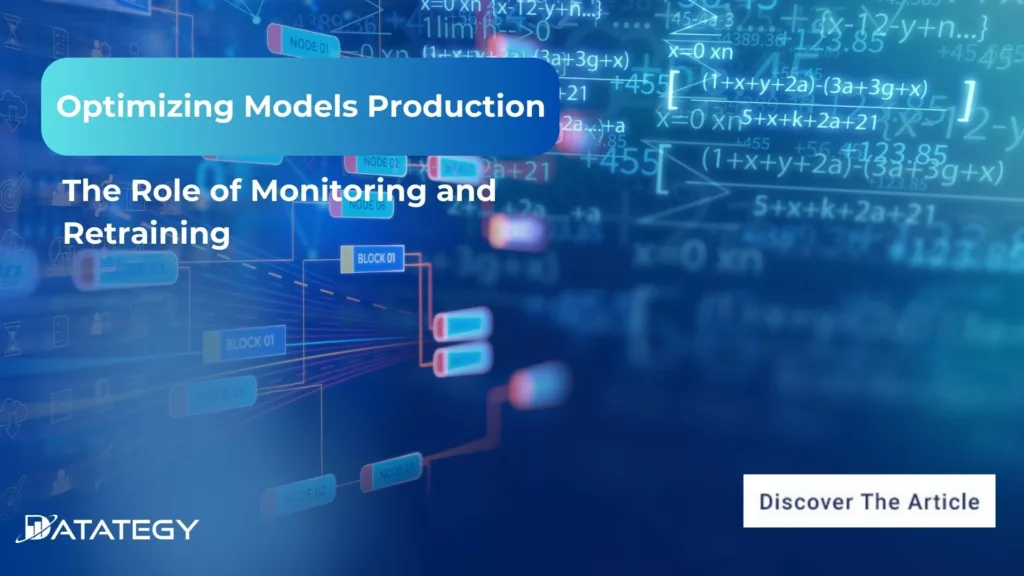
In this article, we’ll explore the importance of monitoring and recycling models and how we can do this.
What's a Machine Learning Models
Artificial intelligence is based on machine learning models, which use algorithms to automatically analyze data, identify patterns, and make well-informed conclusions. Through a procedure known as training, these models gain knowledge from past data and gradually increase in accuracy and functionality.
Machine learning models become important tools in a variety of sectors because of their ability to adapt to new knowledge and changing situations through this iterative process. Machine learning models may be used to diagnose illnesses, optimize supply chains, or forecast consumer behavior. These models enable businesses and organizations to derive important insights and make well-informed decisions.
Fundamentally, machine learning models use data to simulate human intellect, albeit digitally. With their unmatched speed and scalability, they are excellent at jobs that are too difficult or time-consuming for conventional programming techniques.
These models may find hidden patterns and correlations in data by utilizing methods like support vector machines, decision trees, and neural networks.
How to Produce a Machine Learning Model
In order to fully understand production models, it is necessary to examine their basic theories. A production model is essentially a computational framework created to handle incoming data and produce real-time, actionable insights or forecasts. These models function within the wider artificial intelligence (AI) discipline of machine learning, which focuses on creating algorithms that automatically become better with time.
1- Describe the issue: Start by clearly identifying the problem that your machine learning model is meant to answer. This entails being aware of the goals, limitations, and possible effects of the solution. To guarantee alignment with business objectives, gather needs from stakeholders and set precise, quantifiable targets for the model’s functionality and performance.
2- Collect Data: The foundation of developing a machine learning model is data collecting. Locate applicable datasets that include data relevant to the area of concern. Make sure the data are representative, high-quality, and comprehensive across the issue domain. While following data security and privacy guidelines, strike a balance between structured and unstructured data sources.
3- Data preprocessing: This important stage involves cleaning and getting the data ready for examination. To guarantee data quality, take care of missing values, outliers, and discrepancies. Utilise methods like feature scaling, normalization, and transformation to improve data consistency and suitability for analysis and training models.
4- Split Data into Training and Testing Sets: To assess the performance of the model, split the data into distinct training and testing sets. Set aside 70–80% of the data for training purposes and use the remaining portion for testing. This guarantees an objective evaluation of the model’s ability to generalize on untested data.
5- Choose a Model: Based on the characteristics of the problem and the properties of the data, select a suitable machine learning algorithm. Take into account aspects like performance needs, interpretability, and scalability. Neural networks, support vector machines, decision trees, and linear regression are popular methods that perform well for various kinds of issues.
6- Educate the Model: Utilising the training dataset, train the chosen model. In supervised learning, provide the model input data along with labels, or in unsupervised learning, let it extract patterns from the data. Adjust the hyperparameters of the model to maximize efficiency and avoid overfitting.
7- Analyse Model Performance: Make use of the testing dataset to evaluate the performance of the trained model. Analyse measures specific to the kind of problem, such as recall, accuracy, precision, and F1-score. Analyze the model’s ability to generalize to new data and pinpoint areas that require improvement.
8- Deploy the Model: Put the model into production for practical use when it performs satisfactorily. Make sure it’s easily integrated with the current systems to guarantee scalability, dependability, and effective deployment. During deployment, take into account variables like model latency, resource use, and user interface needs.
9- Monitor and Maintain: Keep an eye on the performance of the deployed model in real-world settings. Continually add new data to it or retrain it as needed to keep it functional. To identify irregularities and guarantee continued functioning, put monitoring and warning systems in place. Encourage the upkeep and iteration of models in order to adjust to changing business requirements and data landscapes.
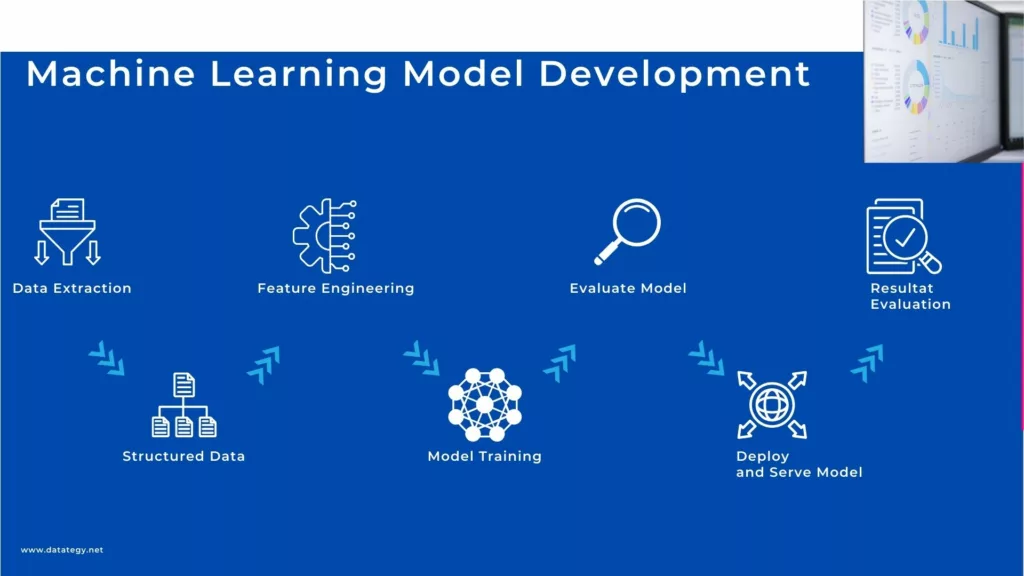
Monitoring: The Eyes and Ears of Model Performance
What do We Mean about Monitoring Machine Learning Models?
When a machine learning model is put into production, its behavior and performance must be closely observed. This is known as monitoring. It’s similar to having a watchful guardian monitoring the model’s actions to make sure it continues to provide correct forecasts or insights and functions as intended.
In order to evaluate a model’s efficacy over time, monitoring comprises recording a variety of metrics and indicators, including model accuracy, precision, and recall. It also entails looking for anomalies or departures from typical behavior, which may point to problems with data drift or model deterioration. Data scientists and engineers may keep an eye on the model at all times to spot possible issues early on and take preventative action to keep it functioning and reliable.
What's the Importance of Monitoring ML Models?
Maintaining the efficacy and reliability of machine learning (ML) models in practical applications requires close observation. Consider it as routinely assessing the condition of an important system to avert possible malfunctions.
We can identify any departures from the anticipated, such as data drift or model deterioration, by regularly monitoring machine learning models after they have been deployed. This proactive strategy guarantees that the model will remain accurate and relevant over time by allowing for timely action to address problems before they worsen.
Additionally, keeping an eye on ML models provides insightful information about their functionality and performance, which helps with decision-making. It offers vital feedback on how successfully the model is adjusting to evolving user interactions and data patterns.
Stakeholders may maximize the return on their machine learning (ML) investments by making well-informed decisions on resource allocation, model upgrades, and strategic planning by being aware of these subtleties. As a result, keeping an eye on ML models is crucial for both maintaining their functionality and using data-driven insights to propel company success.
Retraining: Breathing New Life into Models
What do We Mean about Retraining Machine Learning Models?
Retraining machine learning models requires incorporating new or more data to update and improve their capabilities. It’s comparable to offering continuous instruction to enhance performance over time.
Retraining a model entails letting it learn from new data and adding any new insights or patterns that may have surfaced after the first training. Through iterative process adaptation to shifting trends or user preferences, the model maintains its efficacy and relevance in dynamic situations.
Machine learning models must be retrained in order for them to remain accurate and relevant over time. If data distributions shift and new patterns appear, models that remain constant may lose their efficacy.
Organizations may remain ahead of the curve and provide current insights and forecasts that support well-informed decision-making by routinely retraining their models. Retraining machine learning models is, in the end, a proactive approach to using data and guaranteeing that models maintain their usefulness in a constantly evolving environment.
What's the Importance of Retraining ML Models?
Retraining machine learning (ML) models is crucial since it keeps the models useful and efficient in changing contexts. ML models need to change in order to recognize new patterns and trends in data, much as people do when they adapt and gain knowledge from new experiences.
By ensuring that models stay accurate and dependable over time, retraining reduces the possibility that performance may suffer as a result of adjustments made to user behavior or data distributions. Retrained models are ultimately more valuable to organizations and stakeholders because they can make more accurate forecasts and recommendations by incorporating new insights from updated data.
Future Trends and Innovations in Production Model Optimization
the proliferation of observability and model monitoring technologies is a huge trend, allowing organizations to track the performance of deployed models in real-time and identify behavioral abnormalities or drifts. Organizations may proactively resolve problems and optimize model performance with the help of these tools, which offer insights into model health, performance indicators, and resource utilization.
With the use of serverless architectures and cloud-native platforms, MLOps are becoming more accessible and scalable in terms of model deployment and maintenance. A variety of MLOps services and tools are available from cloud providers, making it easier for businesses to scale and implement machine learning models and concentrate on developing features that provide value rather than maintaining infrastructure.
Companies may boost creativity, cut expenses, and seize new chances to integrate machine learning into their services and applications by utilizing cloud-native MLOps platforms. Organizations need to adopt these innovations and trends as MLOps continue to change to remain competitive in the quickly changing field of production model optimization.
Streamlining Production: Monitor & Retrain Models using papAI7
Overview of papAI Platform
As a complete and advanced End-to-End AI solution, papAI is unique in that it acts as a driving force behind the smooth implementation and industrialization of data science and AI initiatives. The fundamental purpose of papAI is to simplify the whole AI project lifecycle by offering a single platform that breaks down conventional boundaries between development, deployment, and cooperation. This solution, which includes state-of-the-art technology, collaborative features, and a suite of tools for effective project execution, is painstakingly created to equip organizations with an all-encompassing approach to AI.
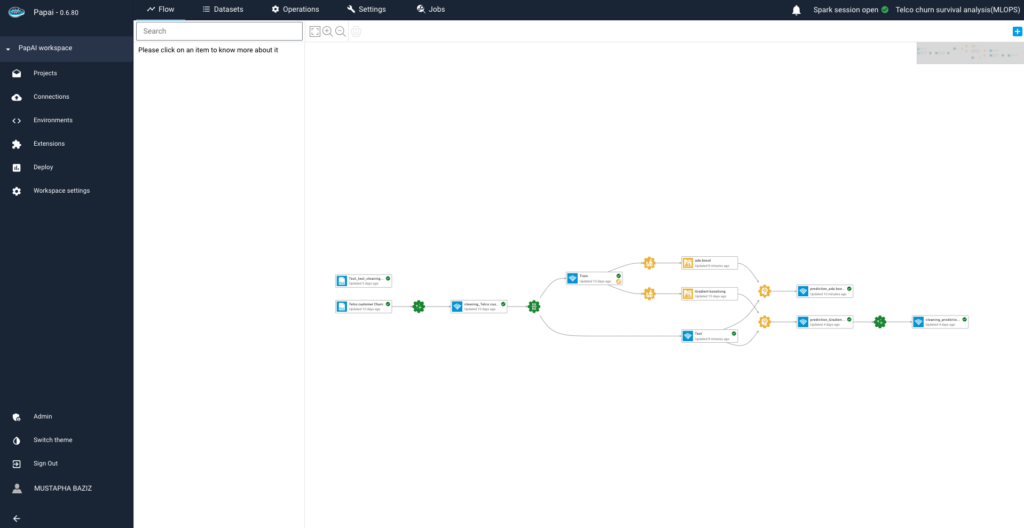
A) How to Retrain Models on papAI 7?
1- Import the New Dataset to the Flow
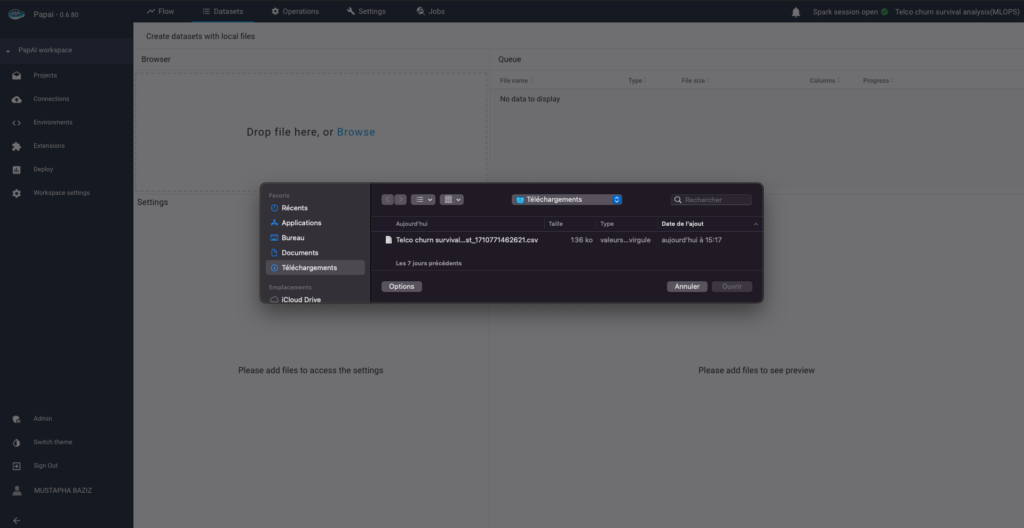
2. New Prediction
- Choose new dataset
- Select prediction operation
- Select the needed registry ( the register containing the ML model we want to use to predict )
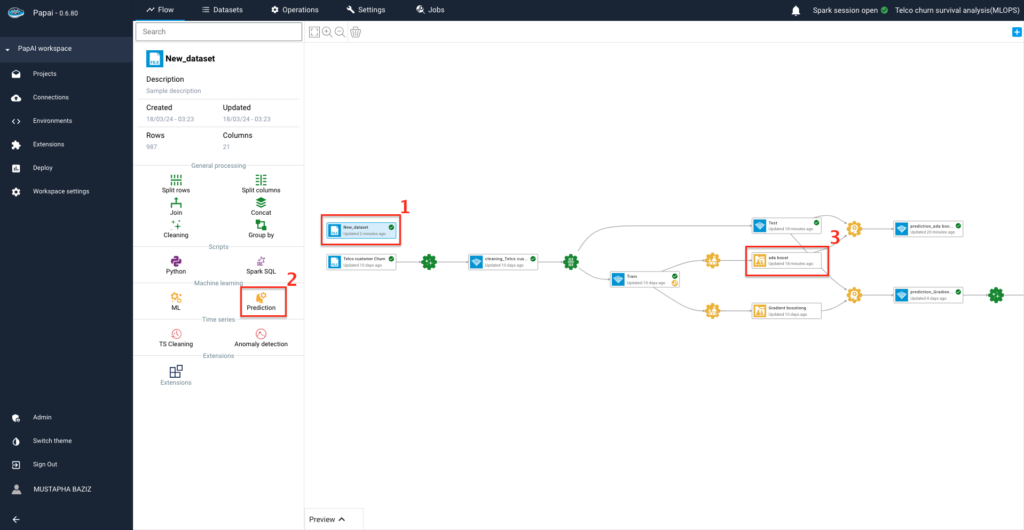
Inside, select the registry you want to use
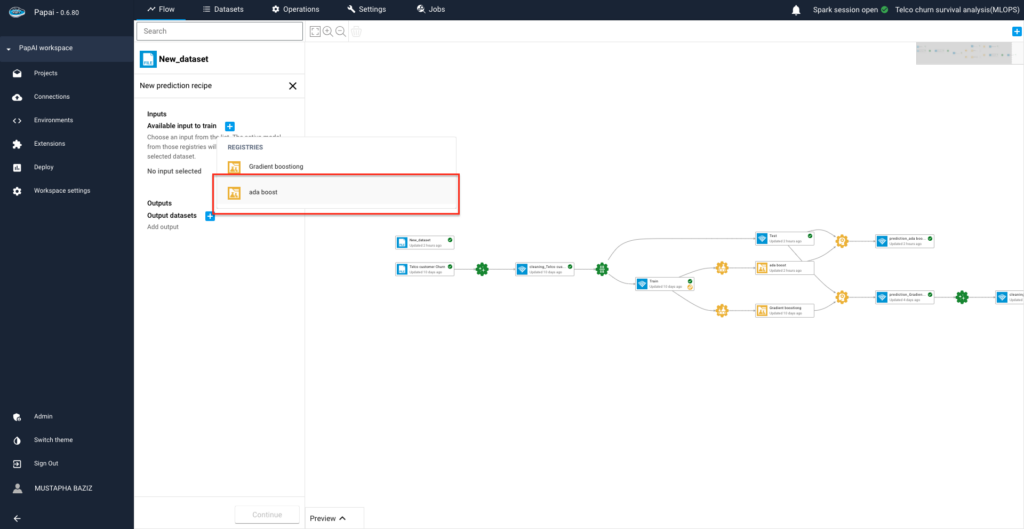
3. New Output (the result of the prediction)
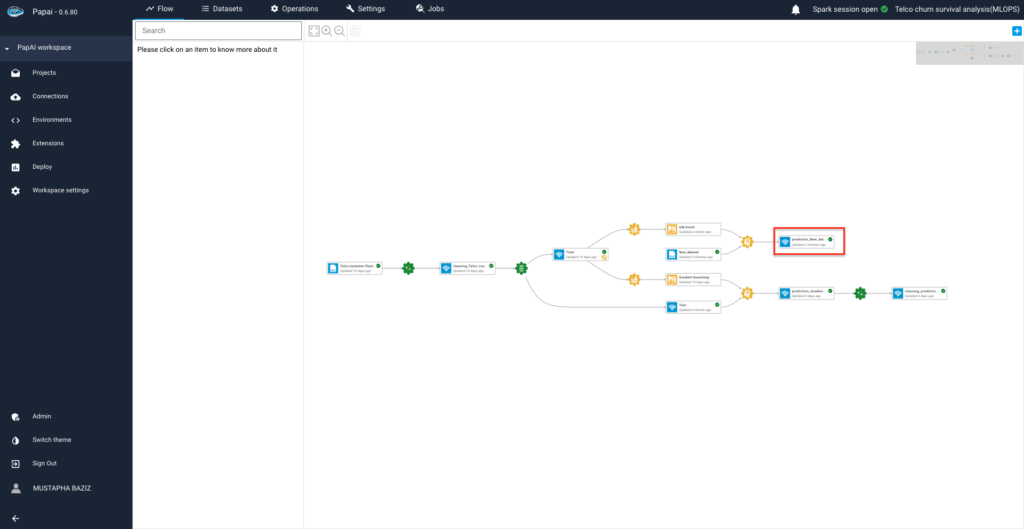
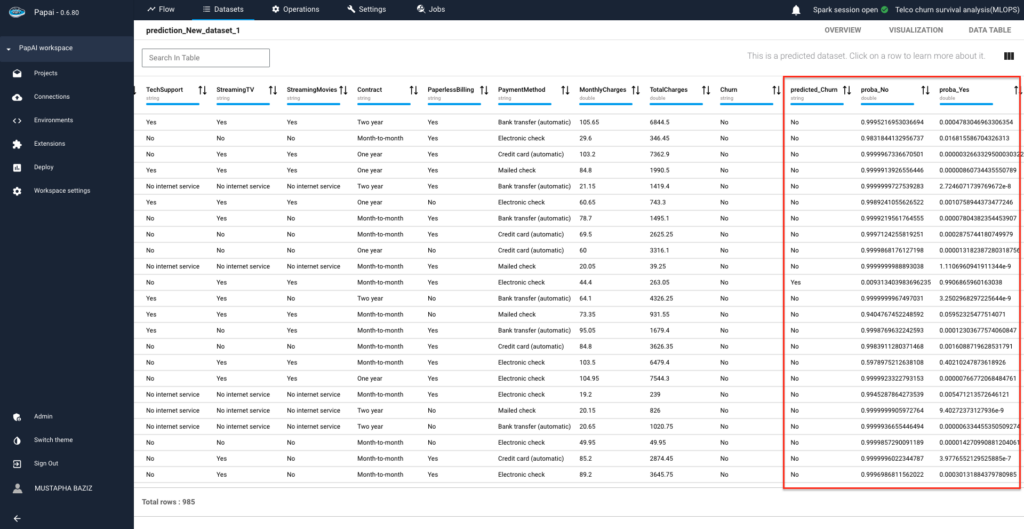
B) How to Monitor your Models?
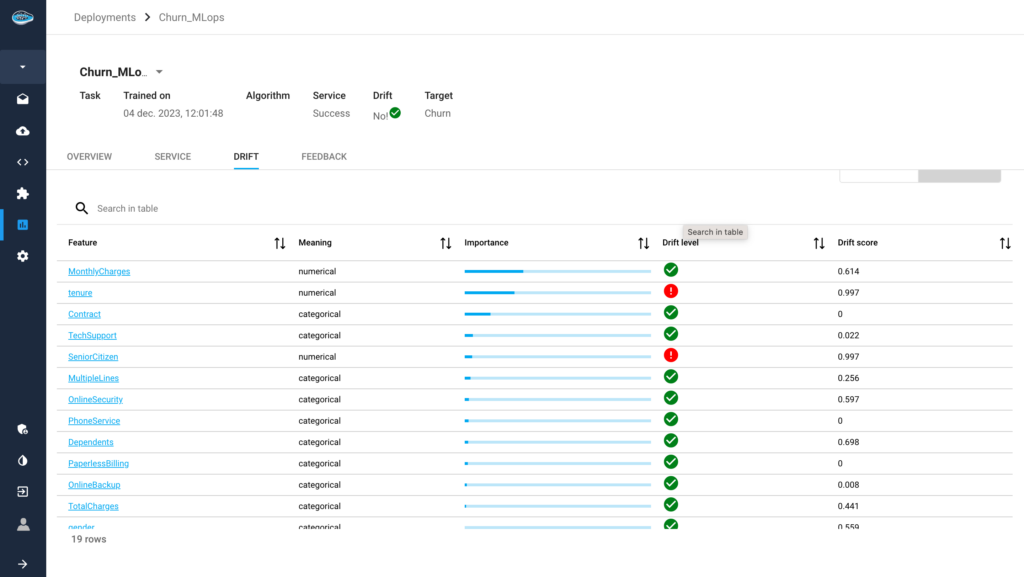
Real-time inference with the option to provide feedback in the event that the prediction does not align with the ground truth.
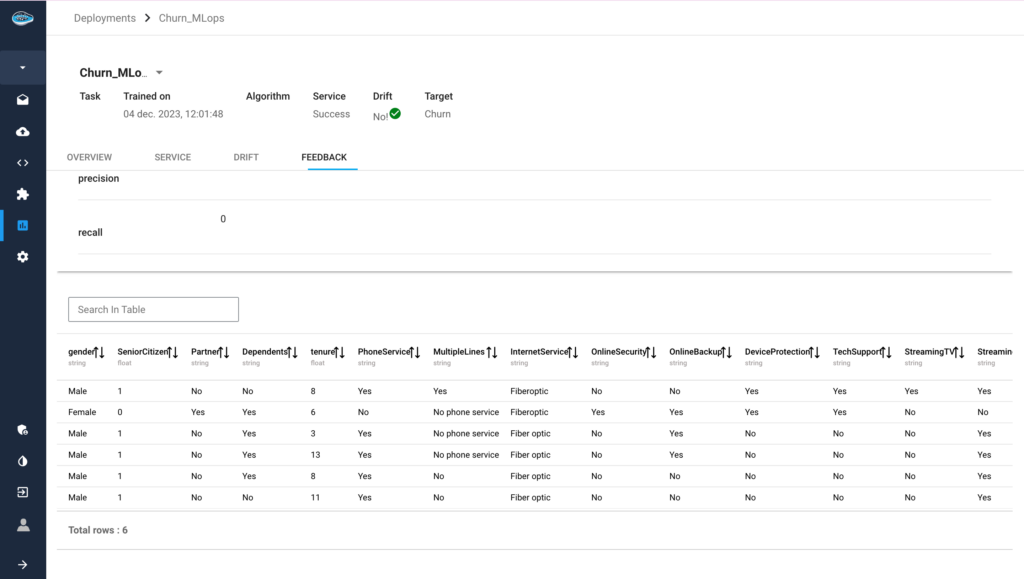
Accelerate AI Adoption: Deploy Your Own Tool with papAI Platforme
In conclusion, as businesses want to simplify the deployment and maintenance of machine learning models at scale, the evolution of MLOps will have a significant impact on production model optimization in the future.
Businesses must embrace new trends and technologies in MLOps to stay ahead of the curve as we traverse this innovative and changing world. Leading the way in this regard is papAI Platform, which provides an extensive range of services and tools to enable enterprises to easily implement their own AI-based solutions.
Schedule a demo with us right now to get a firsthand look at the exciting possibilities of papAI Platform. Learn how to accelerate your AI initiatives, involving model building, deployment, and beyond, with our platform.
Interested in discovering papAI?
Our AI expert team is at your disposal for any questions
“DATATEGY EARLY CAREERS PROGRAM” With Samar CHERNI
“DATATEGY EARLY CAREERS PROGRAM” With Samar CHERNI Hello, my name...
Read MoreAI Origins: Yann LeCun
AI Origins: Yann LeCun Welcome to ”AI Origins “ series....
Read MoreThe Rise of Humanoid Robots: Progress and Challenges
The Rise of Humanoid Robots: Progress and Challenges Some humanoid...
Read More